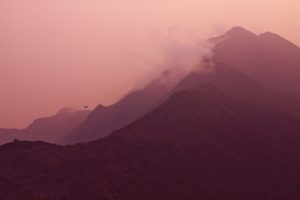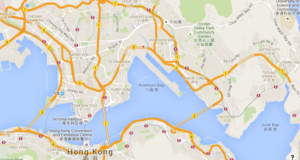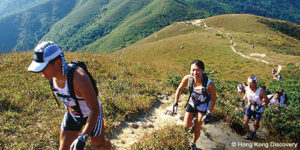‘We travel not to escape life, but for life not to escape us’
– Robyn Yong
Now, into seventh decade of life, I find myself yearning for more productive and soul filling, travels. Indulgence into run of the mill tourism, attracts me no more now. Travel is a nice getaway as it up-sticks us from the grooves of our daily mundane chores, and releases us free to make fresh connects within and without. It is a great feeling of being liberated, like switching over to ‘Do Not Disturb’ mode. We, four childhood friends homed on to Bandhavgarh National Park, for a sojourn with its luring deciduous forest.
All of us Boarded Dayodaya Express at Jaipur, to take us to Katani junction, the railhead for Bandhavgarh. Dayodaya (दयोदय) was a strange word to me, and it took me a while to understand its meaning. I learnt, it is concept, and a movement by one Jain muni, Vidyasagar about the human compassion towards animals. May be the Indian Railway thought well to name this train so, taking travellers to wildlife sanctuaries and parks of Madhya Pradesh.
To know the actual India, and with no pretense, a long rail journey does real good. The real India, is on the railway platforms and the public conduct is despicable and disgusting. The coach we traveled in was, unmistakably on a rather long extended service, with no Supreme Court to intervene, as in case of Qamar Javed Bajwa, the Pakistani Army Chief. Despite the visible series of repairs and patch work, it had still worsened into a bone rattler. Though, the coach was well kept otherwise and well served but the blankets they issued for the night, stank. All these irritants miserably failed to dampen our spirits, and the enthusiasm to travel to Bandhavgarh was uncork-able. Soon, we four were chatting, recollecting schooldays, old friends, and talking non stop with sporadic crackles, unmindful of the strange looks from co passengers. Our Absolute (spirit) with freshly cut lime & crushed green chillies, went well camouflaged. The pot lunch was sumptuously filling, and our titters faded as we dosed of late, well passed midnight.
Soon, we were on the road loaded in Innova driving to Bandhavgarh, Tala to be precise. The deciduous forests along side, made the single road look like a tunnel. The whole environment was so invigorating, we rolled the panes of car windows down to gasp as much fresh air. Our hosts: The Tiger Den, run by Mr Gyanendra Tripathi, gave us opened arms reception. The resort is tastefully laid out, landscaped with exotic plantation. The bamboo groves, Champa, Molsari, Kadam, Palash etc, standing tall and were enough to make us fall in love with the place. Here we will be spending nextt threed and the very thought was kindling excitement inside us. The cottages were neat, clean and well furnished.
It was Safari Time at 2.30 PM.
We all dressed up like cowboys, donning shades, mounted the Maruti Gypsy, and our सारथी was Sh.Raju Singh, a veteran driver of Bandhavgarh Park, for 25 years. He knew the sanctuary like back of his palm and Tigers by their first names including lineage. Our rattled backs, after Dayodaya Express, found no respite with Raju Singh Ji’s Gypsy. Himmat Singh, one of the foursome had tough time in the rear most seat. I had comfortable time sitting in front, courtesy the rest. They knew my handicap.
Bandhavgarh, is mainly a Sal forest, a tree that provided timber for railway sleepers, till the concrete ones replaced these recently. The locals say nothing goes wrong with the wood for 300 years, and in their dialect “ सौ साल खड़ी, सौ साल पड़ी और सौ साल ना सड़ी। It is a tough wood. We soon started seeing wild life, and the very first were elephants housed in their camps. It was wonderful sight of a baby elephant and mother cuddling with her trunk. Soon, we crossed a herd of spotted deer grazing, then
appeared wild boars, crossing our track. Jungle babblers, and many birds we don’t know names of,were cooing and chirping filling the air with such delight.
And then our guide drew our attention to the callings by different animals. It was monkey and Chital repeating the call with enough desperation. I was experiencing it for the first time. Padam Singh, a veteran of Forest services, explained us the calling by animals and how one can track the movement of the predators. Our guide, soon changed his guess from Tiger in proximity, to Leopard because the Chital’s bleating was not crying enough. It was getting dark, and there was no sighting of Tiger as yet. We returned to our camp empty and disappointed. Fortunately, Padam Singh’s friend and a colleague from Forest Dept, Mr Narendra Singh Parihar came down to meet him. He promised us
Tiger sighting next morning.
We were up at five, made second attempt and this time through a different zone called Magadhi. Early morning chill, and drive in open Gypsy was bothering us when, we were pleasantly surprised by our hosts who handed over us soft blankets to cover ourselves. It was like God sent. As we drove into forest through the misty morning, we were greeted by a herd of Bisons grazing not any far from us. What a massive beast it is! Each shouldn’t be weighing less than 6 to 700 Kgs. Our guide, indicated two alpha males, who would be around 1000 kgs. They both had locked their horns, and may be claiming mating rights in the herd. We took some snaps.
As we moved deeper into the jungle, Kamlesh our guide spotted the pug marks of Tiger. He further asserted, these are of a Tigress and other smaller ones of her three cubs. He knew, that she is Dotty and just finished her night patrol, along with her cubs. Dotty, with her young ones now in a process to settle down for the day, he further stressed. I asked, why she is called Dotty? Kamlesh explained that the Tigress has a ‘D’ looking spot on her forehead, and that’s how the name. And, there is another Tigress who is named Spotty, on similar lines. The pug marks were seen vanishing into the woods, and we all knew where she has taken a morning break. There was continuous calling, and the presence of Tigress was eminent. But, she wouldn’t just show up. Our patience gave up. We decided to drive upto the refreshment point and have our breakfast, in the meantime. The hawkers, there were making hot pakoras, steaming Maggi, and ginger tea. I didn’t touch packed Breakfast from Hotel. As, we were getting done with our last sips of hot tea, there was sudden alert sounded for the Tiger, who was greedily eyeing for some cows, strayed grazing into the buffer. All the tourists jumped into Gypsies, and everyone just broke loose, zipping towards the sought after spot.
And, lo behold. The Tiger was in his ambush, tactically sited. Unnerved by huge gallery, the regal predator was sitting on the fringes, well camouflaged. His demeanour was kingly and we all watched him with widow eyes. Our wait was over. After, granting us a great audience, he quietly walked to his next bound for an intended hunt. As he gracefully moved, his gender was reconfirmed and “ He is Bhamera’s son” said Kamlesh. What a name the royal beast had! I enquired further, and unfolded the story. There was Tiger who had once strayed into nearby village, called Bhamera. He got his name. What we saw was his son. Seems so strange! No?
Our mission was nearly over once the Tiger had shown up. For all those wildlife enthusiasts, who venture into various sanctuaries and parks, I would leave a thought behind. It is the forest and it’s environ that has to be savoured and felt by our souls. Focusing on Tiger sighting can rob you of the small pleasures of watching the flora and fauna, the cooing and chirping of the birds, fluttering of jungle fowls, that innocent gaze by antelopes or may be monkeys jumping around. The moist air of jungle has soul filling scent and earthly whiffs that invigorates your nostrils and lungs. The quietness and serenity of jungle is treasure we miss in cities. Let’s not miss woods for the trees, or shall we say Tiger?
Part II
A visit to Bandhavgarh would be incomplete without having shopped and eaten at Malaya, a boutique cum café run by an elderly lady Ms Neelam. Her shop be better called as an Art Gallery. She relocated herself away from the hustle bustle of Ahmedabad city, for her sheer love for living in smaller places, close to nature. The lady has rightly thought of running such a delightful corner in a rustic rural, Tala. Ms Neelam has a passion of collecting art & craft works from pan India, specially the tribal work. She singlehandedly drives her Maruti Gypsy, and detests national highways. Venturing deep into the countrysides, she looks for dying arts and skills of our Indian tribes, reach out to artists, crafts(wo)men and does her best to preserve these. Each item in her shop is carefully selected, handpicked and needless to say priceless. Himmat Singh and I bought a few souvenir, but God sent, through her, was my favourite fresh beans, French Press filtered Coffee, with a delicious banana cake (egg free), that too complimentary. Knowing her was great pleasure, and my blog would have been equally incomplete without mentioning The Malaya.












































































